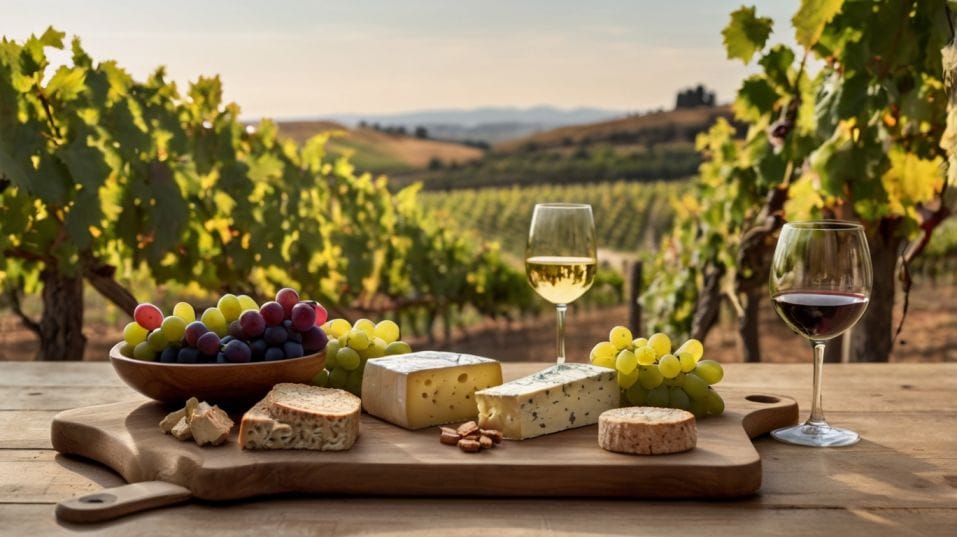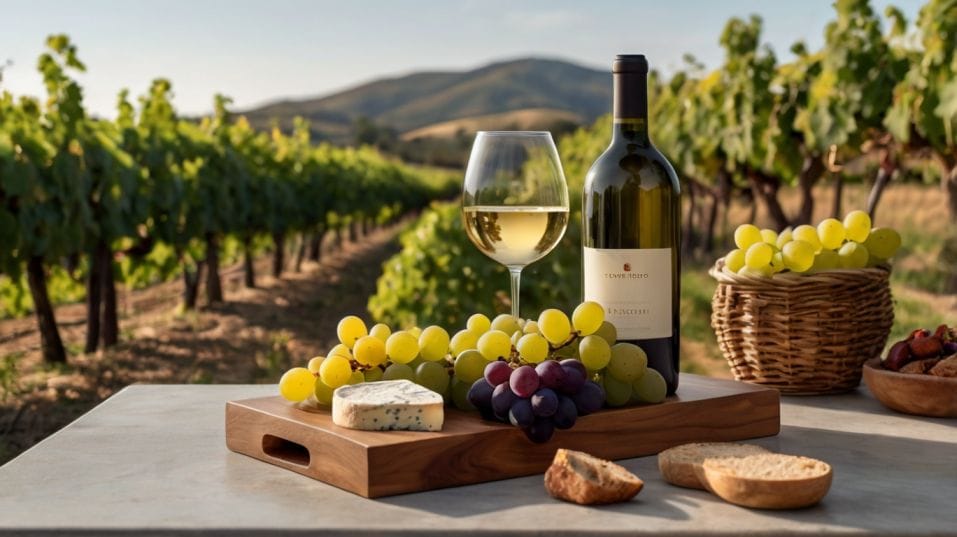Why Riesling Isn’t Always Sweet
Think Riesling is sweet? Think again. Discover how this misunderstood grape teaches you to taste smarter and choose wine with confidence.

Think all Riesling is sweet? Think again. This grape is one of the wine world’s biggest curveballs—expressive, electric, and full of surprises. If you’re starting to explore wine seriously, Riesling is your best teacher.
It sharpens your palate, challenges your assumptions, and shows how balance—not sweetness—defines quality. Forget what you’ve heard. The real story of Riesling is far more exciting than sugar.
The Reputation Problem
Riesling’s image problem started decades ago. In the mid-20th century, cheap, mass-produced sweet wines—especially from Germany and parts of California—flooded the market.
They were labeled “Riesling” (or “Rhine wine”) but often bore little resemblance to true, quality-driven Rieslings.
These wines were soft, sugary, and forgettable, but they were easy to drink. For many casual wine drinkers, that was their first—and only—encounter with the grape.
The damage stuck. Riesling became shorthand for “sweet white wine,” especially in the U.S. But if that’s all you know about Riesling, you’re missing out on an entire world of flavor, structure, and cultural tradition.

What Riesling Actually Does
Riesling is what wine professionals call a terroir-expressive grape—it reflects where it’s grown with striking clarity.
Whether planted on slate hillsides in Germany, volcanic soils in Alsace, or limestone slopes in Australia’s Clare Valley, Riesling absorbs its environment and communicates it straight into your glass.
That’s rare. And it’s powerful if you’re learning to taste wine with more precision. More importantly, Riesling has naturally high acidity.
That acidity is what allows it to age gracefully for decades, what makes it feel crisp and mouthwatering, and—yes—what balances out any residual sugar when present.
Sweetness isn’t there to mask flaws. It’s a tool, like salt in cooking, used to enhance or balance.
So, while some Rieslings are sweet (and beautifully so), many of the most compelling versions are dry or just barely off-dry. And the best way to judge a Riesling isn’t by its sugar—it’s by its balance.
Decoding Sweetness: It’s Not Always Obvious
Here’s where things get tricky. A Riesling can technically contain residual sugar and still taste dry if the acidity is high enough. That’s why tasting is more important than trusting the label.
For example, a wine with 10 grams of residual sugar per liter might sound sweet on paper. But if it also has 8–9 grams of acidity per liter (which Riesling often does), it will feel bright, crisp, and focused—not sugary. It’s the ratio that matters.
Learning to sense that balance in your mouth—rather than assuming sweetness based on fruitiness—is a game-changer.
Those notes of peach, lime, or honeysuckle? They’re aromatic, not necessarily sweet. A well-made dry Riesling can smell like ripe fruit while tasting zesty and lean.
Geography Shapes the Style
Not all Rieslings are made the same way. Where the grape is grown—and who’s making the wine—shapes its final style.
Germany
The spiritual home of Riesling. The cool climate and slate soils of regions like Mosel, Rheingau, and Nahe produce wines with vivid acidity and finesse.
German Rieslings range from bone-dry (Trocken) to intensely sweet (Beerenauslese or Trockenbeerenauslese).
The Prädikat system classifies wines by ripeness level at harvest, not sweetness in the bottle—so reading the label requires nuance.
Alsace (France)
Typically dry, powerful, and structured. Alsatian Rieslings are often fuller-bodied with a firm backbone of acidity and distinct mineral character.
These are fantastic food wines, with depth and a dry finish that can surprise anyone expecting sweetness.
Austria
Less famous for Riesling than for Grüner Veltliner, but still home to excellent dry examples—especially from the Wachau and Kamptal regions. These wines are crisp, clean, and focused.
Australia
Particularly the Clare and Eden Valleys. Rieslings here are typically dry, razor-sharp, and bursting with lime, citrus, and sometimes a faint petrol note that develops with age.
United States
The Finger Lakes in New York and certain parts of Washington and Oregon produce Rieslings in a wide range of styles.
Many winemakers are transparent about sweetness levels and acidity, making it easier for buyers to find what they want.
Smarter Tasting: What to Look For
When tasting Riesling—especially if you're trying to move beyond assumptions—slow down and let the wine guide you.
Start with the nose: Riesling is intensely aromatic. Classic notes include lime zest, green apple, jasmine, wet stone, and occasionally petrol (a naturally occurring aroma that many seasoned drinkers seek out).
Then focus on mouthfeel: Riesling often has a sleek, almost electric texture. Dry styles feel tense and linear; sweeter versions are rounder but should never be syrupy or flabby. That tension between acid and fruit is the signature.
And don’t overlook the finish. A great Riesling—dry or sweet—lingers. If it disappears quickly or tastes one-dimensional, it’s probably not showing its full potential.
Food Pairing Power
This is where Riesling really separates itself. Because of its natural acidity and range of styles, it pairs beautifully with foods that most wines struggle with.
Dry Rieslings cut through richness—think pork belly, duck, or creamy sauces. They also elevate vegetables, seafood, and lighter fare without overwhelming them.
Off-dry Rieslings are incredible with spicy or salty dishes. Riesling’s precision keeps the pairing sharp, not sloppy.
It’s a go-to with Thai curries, Sichuan peppercorns, Korean BBQ, or Vietnamese noodle dishes. When you get the right match, the food and wine light each other up.
And for cheese? A dry or lightly off-dry Riesling can be a better match than most reds, especially with washed-rind or aged cheeses that need acid and fruit more than tannin.
Final Thoughts
Riesling isn’t simple—and that’s what makes it worth your attention. It challenges assumptions, rewards curiosity, and teaches you how to taste with more depth.
Whether dry, off-dry, or sweet, the best examples are always about balance, clarity, and place.
If you’ve written it off, it’s time to revisit. Ask for a dry Riesling from Alsace, Austria, or the Clare Valley. Try an off-dry bottle with spicy takeout.
Pay attention to how the acidity plays against sweetness or salt. That’s how you start building flavor literacy.
You don’t need to memorize regions or learn German label law to appreciate Riesling. You just need a glass, a little focus, and the willingness to taste beyond the surface. Start today—because Riesling isn’t what you think. It’s better.




